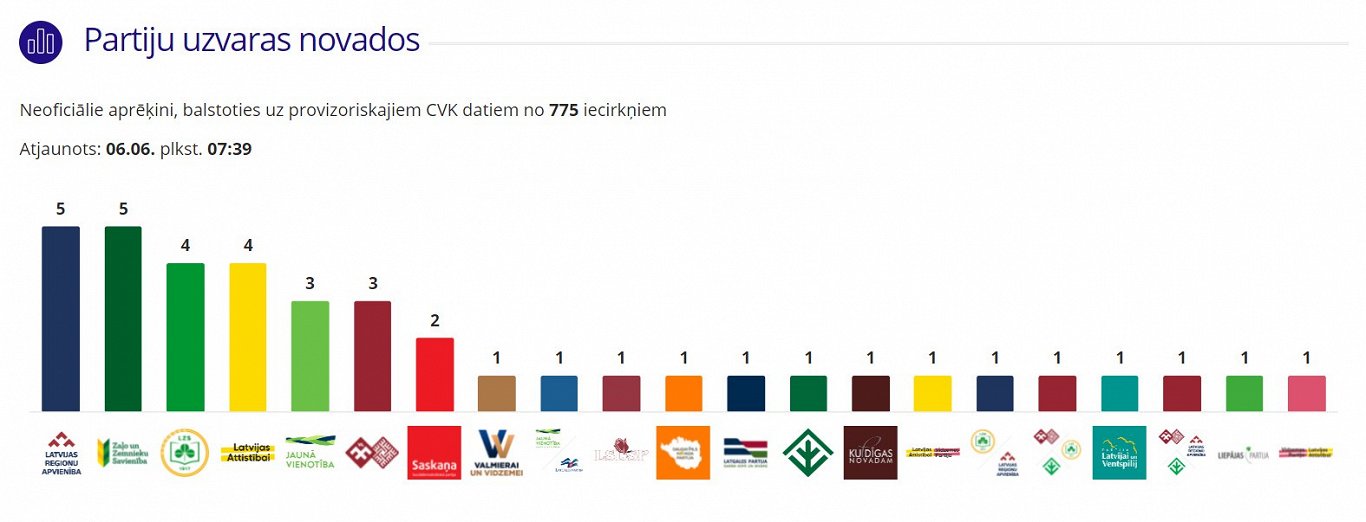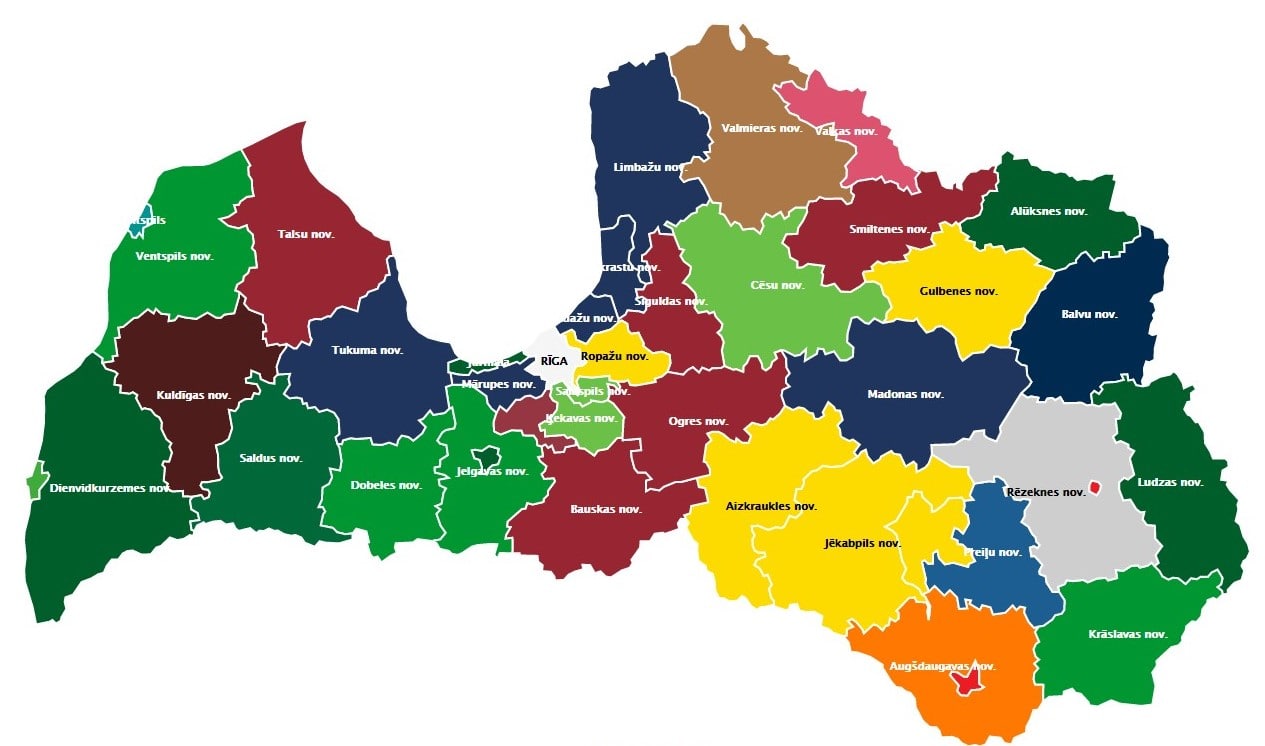According to early results from the Central Elections Commission (CVK), of 40 disctricts up for grabs (Rīga, Rēzekne and Varakļāni districts did not hold elections) ZZS topped the poll results in five places: South Kurzeme district, Ludza, Alūksne, Jūrmala city and Jelgava city.
However, the situation is complicated by the fact that in different regions, different parties traditionally allied under the ZZS umbrella participated in the elections (sometimes even in the same district) with the Latvian Green Party (LZP), Latvian Farmers' Union (LZA) and ZZS itself all on ballot papers in different districts. The LZA topped the poll in four districts and the LZP in one district.
According to LSM's Latvian-language service, ZZS may get to control as many as 15 of the new municipalities.
ZZS on its own won 12.5% of the seats. Exactly the same percentage of seats was won by the LRA, which experienced something of a comeback. LRA started in 31 districts and also won outright in five places: Tukums, Mārupe, Ādaži, Saulkrasti and Limbaži.

Three parties within the current four-party coalition did reasonably well. Latvia's Development won in four municipalities, New Unity in three, and the National Alliance in three.
Opposition party Harmony (Saskaņa) topped the poll in two districts.
In all other districts, single local parties or one-off joint lists in which other parties pooled their forces came out on top, creating a sometimes confusing picture and laying the ground for future intrigues. For example, one municipality saw a joint combination of the National Alliance, LZA and LZP topping the poll. Another was won by a joint National Alliance, LRA, LZP list.
Added to that, the fact that this was the first time local elections were held for these reshaped constituencies makes it difficult to judge exactly what conclusions can be drawn. It is also worth bearing in mind that this was in effect an election stripped of the often-dominant voice of Rīga.
In summary, it can be said that typically for a mid-term election, government parties received a reminder from regional voters that they should not be ignored, and that as one ventures further from Rīga into the deep countryside, agrarian and other local issues rise rapidly up the agenda, sometimes resulting in political alliances that seem strange viewed through a conventional political prism.
You can check the election results for yourself at the CVK website and via this interactive map from LSM.





























